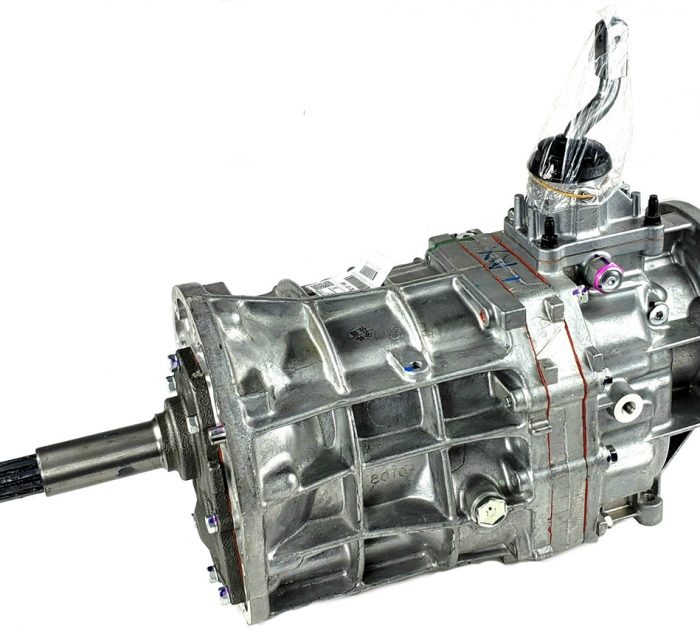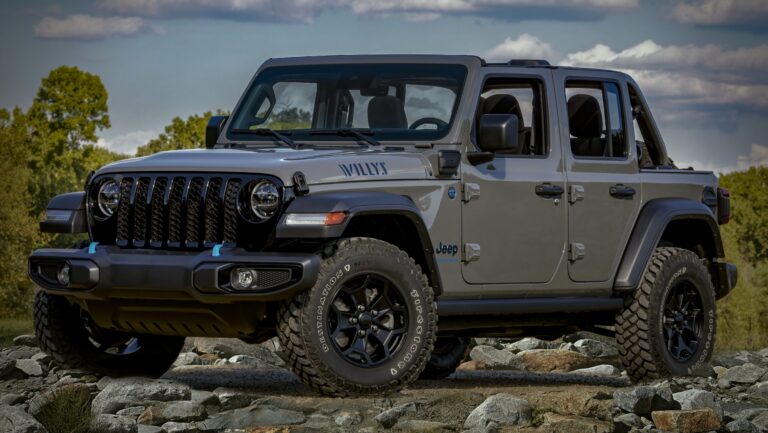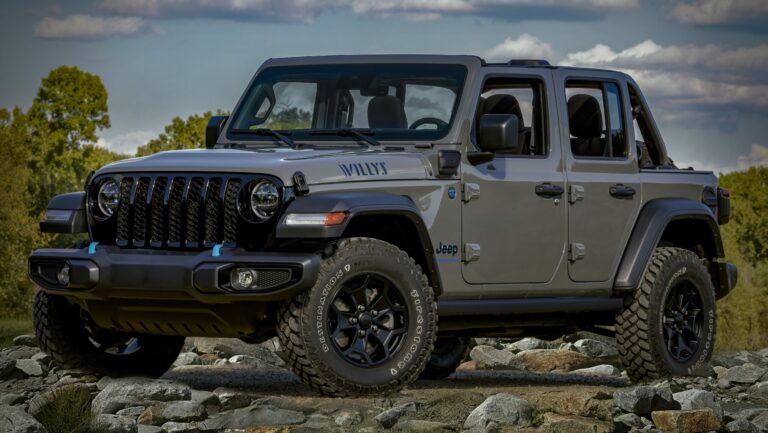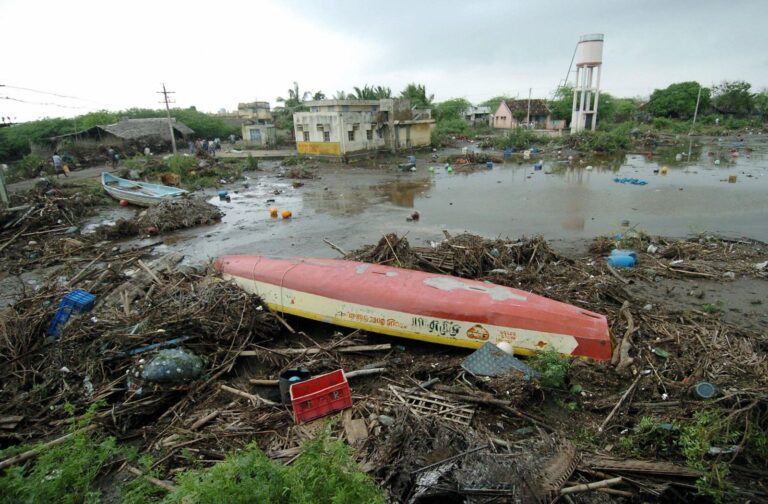1997 Jeep Wrangler Engines For Sale: Breathing New Life into Your TJ
1997 Jeep Wrangler Engines For Sale: Breathing New Life into Your TJ jeeps.truckstrend.com
The 1997 Jeep Wrangler, often affectionately known by its "TJ" chassis code, holds a special place in the hearts of off-road enthusiasts and casual drivers alike. Marking a significant evolution from its YJ predecessor, the TJ reintroduced the classic round headlights while retaining the rugged, go-anywhere spirit that defines the Wrangler. Its robust ladder frame, coil spring suspension, and legendary drivetrain made it an instant classic, capable of tackling trails and cruising highways with equal aplomb.
However, even the most legendary vehicles eventually face the inevitable wear and tear of time and countless miles. For many 1997 TJ owners, the engine becomes the primary component needing attention – whether due to high mileage, a catastrophic failure, or the desire for a performance upgrade. Navigating the world of 1997 Jeep Wrangler Engines For Sale can be complex, but with the right information, finding the perfect heart for your beloved TJ is an achievable goal. This comprehensive guide will walk you through everything you need to know to make an informed decision and get your Wrangler back on the road, or off it, with renewed vigor.
1997 Jeep Wrangler Engines For Sale: Breathing New Life into Your TJ
Understanding the 1997 Jeep Wrangler Engine Options
The 1997 Jeep Wrangler TJ offered two primary engine choices, both renowned for their durability and relative simplicity, making them popular candidates for replacement or rebuilding.
-
The 2.5L Inline 4-Cylinder (AMC 150): This engine, a staple in smaller Jeep models for years, provided 120 horsepower and 140 lb-ft of torque. It’s known for its excellent fuel economy (for a Jeep) and incredible reliability. While not a powerhouse, it’s perfectly adequate for daily driving and light off-roading, especially when paired with the manual transmission. Its simplicity makes it relatively easy to maintain and repair.

The 4.0L Inline 6-Cylinder (AMC 242): The undisputed king of Jeep engines for decades, the 4.0L six-cylinder delivered a more robust 181 horsepower and 222 lb-ft of torque in 1997. This engine is legendary for its bulletproof reliability, ample low-end torque, and ability to endure hundreds of thousands of miles with proper maintenance. It’s the preferred choice for serious off-roading, towing, or simply those who desire more power on the highway. Its popularity means a wider availability of parts and expertise.
When searching for a replacement, it’s crucial to know which engine your TJ originally came with, as swapping from a 2.5L to a 4.0L, while possible, involves significant additional modifications beyond just the engine itself.

Why Buy a Replacement Engine for Your 1997 TJ?
There are several compelling reasons why a 1997 Jeep Wrangler owner might be in the market for a new or reconditioned engine:
- Catastrophic Failure: A thrown rod, cracked block, severe overheating, or unrepairable internal damage can render an engine irreparable, necessitating a full replacement.
- High Mileage Wear: After hundreds of thousands of miles, even the most robust engines begin to show their age. Excessive oil consumption, persistent knocking, low compression, or a significant loss of power can signal it’s time for a new heart.
- Cost-Effectiveness: For many, investing in a replacement engine is far more economical than purchasing a newer vehicle, especially if the rest of the Wrangler is in good condition. The TJ’s strong aftermarket support and classic appeal make this a sensible long-term investment.
- Upgrade Potential: Owners of the 2.5L TJ might seek to swap in a more powerful 4.0L engine to improve performance for off-roading, highway driving, or to accommodate larger tires.
- Preserving a Classic: The 1997 TJ is becoming a sought-after classic. Replacing the engine allows enthusiasts to keep their beloved vehicle on the road and maintain its value.

Types of 1997 Jeep Wrangler Engines Available for Sale
The market for replacement engines offers several categories, each with its own advantages, disadvantages, and price points.
-
Used/Salvage Engines:
- Pros: Generally the most affordable option. Can be found at local junkyards, online marketplaces, or through parts brokers.
- Cons: High risk due to unknown history, mileage, and condition. You might be buying an engine with hidden problems. Warranties, if offered, are usually very limited (e.g., 30-90 days).
- Tips: If considering a used engine, always try to get a compression test, oil pressure readings, and detailed photos/videos. Ask about the donor vehicle’s history. Buy from a reputable seller with positive reviews.
-
Remanufactured/Rebuilt Engines:
- Pros: These engines have been completely disassembled, inspected, cleaned, and had all wear parts (pistons, rings, bearings, gaskets, seals, camshaft, lifters) replaced with new or reconditioned components. They often come with a substantial warranty (1-3 years or more), offering peace of mind. They represent an excellent balance of cost and reliability.
- Cons: More expensive than used engines. Typically require a "core" return (your old engine) or a core charge.
- Tips: Purchase from reputable remanufacturers (e.g., Jasper, ATK, or well-known local rebuilders). Understand the warranty terms thoroughly, including what it covers and for how long. Clarify what accessories (if any) are included.
-
New Crate Engines (Aftermarket):
- Pros: Brand new, zero miles, full manufacturer’s warranty. The highest level of reliability and longevity.
- Cons: The most expensive option. Finding truly "new" Mopar 2.5L or 4.0L engines for a 1997 TJ can be challenging, as production ceased years ago. Most "new" options are aftermarket performance builds, often with upgrades, which might be overkill for a standard replacement.
- Tips: Best for those undertaking a high-performance build or seeking absolute certainty in a replacement. Research the aftermarket builder’s reputation thoroughly.
Key Considerations Before Purchasing
Before you commit to buying a 1997 Jeep Wrangler engine, keep the following critical factors in mind:
- Engine Type Compatibility (2.5L vs. 4.0L): If replacing like-for-like, ensure you’re getting the correct engine model. If attempting a 2.5L to 4.0L swap, be aware that you’ll likely need the corresponding transmission, transfer case, engine mounts, wiring harness, Engine Control Module (ECM/ECU), and exhaust system from a 4.0L TJ. This is a complex and costly undertaking.
- Mileage and Condition (for Used Engines): Lower mileage is generally better, but maintenance history is paramount. Look for signs of neglect, sludge buildup, or significant external leaks.
- Warranty: This is your safeguard. A comprehensive warranty on a remanufactured engine can save you significant headaches and costs down the line. Understand the terms, coverage, and what might void it.
- Completeness of the Engine: Does the sale include just the "long block" (block, head, internal components), or does it come with intake and exhaust manifolds, sensors, and accessories like the alternator, power steering pump, and A/C compressor? The more complete the engine, the easier and potentially cheaper the installation, as you won’t need to source or transfer as many components.
- Shipping Costs: Engines are heavy. Factor in freight shipping costs, which can be substantial, especially for long distances.
- Installation Costs: Decide whether you’ll perform the installation yourself (requiring specialized tools and mechanical expertise) or hire a professional mechanic. Get quotes for labor before purchasing the engine.
Where to Find 1997 Jeep Wrangler Engines For Sale
A variety of sources exist for sourcing a replacement engine:
- Online Marketplaces: eBay, Craigslist, and Facebook Marketplace often have listings from private sellers or smaller parts yards. Exercise caution and verify seller credibility.
- Specialized Jeep Parts Dealers: Many online retailers and brick-and-mortar stores specialize in Jeep parts, including used and remanufactured engines.
- Auto Salvage Yards/Junkyards: Local yards can be a good source for used engines, allowing for in-person inspection.
- Remanufactured Engine Suppliers: Companies like Jasper Engines & Transmissions, ATK Engines, and various regional engine builders specialize in remanufactured units and offer warranties.
- Jeep Forums and Enthusiast Groups: Online communities can be a great resource for leads, advice, and even engines for sale from fellow enthusiasts.
Tips for a Successful Engine Replacement
- Budget Thoroughly: Beyond the engine itself, factor in shipping, core charges, new fluids, gaskets, hoses, belts, spark plugs, sensors, and potentially a new radiator or thermostat. If professional installation, include labor costs.
- Do Your Research: Consult your Jeep’s service manual, watch YouTube tutorials, and read online forum discussions specific to your engine type and year.
- Don’t Skimp on Peripherals: While installing a new engine, it’s wise to replace critical wear items like the water pump, thermostat, serpentine belt, and any questionable hoses or sensors. It’s much easier to do it now than after the engine is installed.
- ECM/ECU Considerations: If swapping from a 2.5L to a 4.0L, you absolutely need the correct ECM for the 4.0L engine and transmission.
- Break-in Procedure: For remanufactured or new engines, follow the supplier’s break-in recommendations carefully to ensure longevity. This usually involves specific oil, RPM limits, and avoidance of heavy loads for the first few hundred miles.
Potential Challenges and Solutions
- Finding the Right Engine: Patience is key. The specific 1997 year might narrow down options. Be prepared to wait for the right deal.
- Verifying Condition (Used Engines): If you can’t inspect in person, ask for detailed photos, videos of the engine running (if possible), and a clear return policy. Consider using a third-party inspection service if buying from a distance.
- Compatibility Issues: Double-check part numbers and ensure the engine is indeed for a 1997 TJ. Small differences in sensor locations or manifold designs can cause headaches.
- Unexpected Costs: Always set aside a contingency budget (10-20% of the total project cost) for unforeseen issues or additional parts.
- Installation Difficulties: Engine swaps are complex. If you’re a DIY mechanic, ensure you have the necessary tools (engine hoist, stands, torque wrenches) and a clear, well-lit workspace. Don’t hesitate to seek professional help if you get stuck.
Estimated Price Table for 1997 Jeep Wrangler Engines For Sale
Please note: Prices are estimates and can vary significantly based on seller, location, engine condition, included components, and market demand. Always get a detailed quote and understand what’s included.
| Engine Type | Engine Model | Typical Condition | Estimated Price Range (USD) | What’s Typically Included (Varies) | Notes |
|---|---|---|---|---|---|
| Used/Salvage | 2.5L I4 | Pulled from Donor | $500 – $1,500 | Long block (block, head, oil pan), sometimes intake/exhaust manifolds, some sensors. May or may not include accessories (alternator, PS pump, AC comp). | High Risk: Condition unknown. Best for those with mechanical expertise for inspection or planning a full rebuild. No warranty or very limited. Price heavily depends on mileage and stated condition. Often requires full gasket kit and inspection before install. |
| 4.0L I6 | Pulled from Donor | $700 – $2,000 | Long block, sometimes intake/exhaust manifolds, some sensors. May or may not include accessories. | High Risk: As above. The 4.0L is more sought after, driving prices up. Look for good oil pressure and compression test results. | |
| Remanufactured/Rebuilt | 2.5L I4 | Professionally Rebuilt | $1,800 – $2,800 | Long block (reconditioned block, head, crank, rods, new pistons, rings, bearings, camshaft, lifters, timing components), often includes oil pump, gaskets. Sometimes comes with new intake/exhaust manifolds. Accessories usually extra. | Best Value: Comes with a warranty (e.g., 1-3 years). All wear parts replaced. Requires core return or core charge. Check what accessories are included. Significantly more reliable than used. |
| 4.0L I6 | Professionally Rebuilt | $2,200 – $3,500 | Long block (reconditioned block, head, crank, rods, new pistons, rings, bearings, camshaft, lifters, timing components), often includes oil pump, gaskets. Sometimes comes with new intake/exhaust manifolds. Accessories usually extra. | Popular Choice: As above, but for the more powerful 4.0L. Verify warranty details and core return policy. | |
| New Crate (Aftermarket) | 4.0L I6 | Brand New | $4,000 – $6,000+ | Varies by manufacturer. Typically a complete long block, sometimes with basic accessories or ready for your original accessories. | Highest Cost, Lowest Risk: Zero miles, full manufacturer warranty. Less common to find brand new 2.5L or original 4.0L Mopar crate engines for this year, usually aftermarket performance builders. Often includes performance upgrades. |
Frequently Asked Questions (FAQ)
Q: Can I swap a 4.0L into my 1997 Wrangler that originally had a 2.5L?
A: Yes, it’s a popular but significant undertaking. It requires not just the engine, but also the transmission, transfer case, engine mounts, wiring harness, ECU/ECM, and potentially radiator and exhaust system compatible with the 4.0L. It’s a complex project best suited for experienced mechanics or professionals.
Q: What mileage is too high for a used engine?
A: There’s no absolute rule. Condition and maintenance history are more important than mileage. A well-maintained engine with 150,000 miles can be a better buy than a neglected one with 80,000. Always ask for proof of maintenance and, if possible, get a compression test.
Q: Do these engines come with a warranty?
A: It depends on the type of engine. Used engines typically have no warranty or a very short, limited one (e.g., 30-90 days). Remanufactured engines usually come with a 1-3 year warranty. New crate engines have a full manufacturer’s warranty. Always clarify warranty terms before purchasing.
Q: What’s a "core charge"?
A: A core charge is a refundable deposit required when buying a remanufactured engine. It’s refunded to you when you return your old, rebuildable engine ("core") to the supplier. This incentivizes recycling and keeps costs down for everyone.
Q: Should I buy a long block or a complete engine?
A: A "long block" includes the engine block with cylinder head(s), crankshaft, camshaft, pistons, and valvetrain. A "complete engine" typically includes the long block plus intake/exhaust manifolds, oil pan, and possibly some accessories (alternator, power steering pump, AC compressor). Complete engines are easier to install as fewer components need to be transferred, but they are generally more expensive. Your budget and mechanical skill will guide this choice.
Q: How much does professional installation cost?
A: Labor costs vary widely by region and shop, but typically range from $1,000 to $2,500+ for a like-for-like engine swap, excluding the cost of the engine itself and additional parts. A 2.5L to 4.0L swap will be significantly more due to its complexity.
Q: What are common problems with the 1997 TJ engines?
A: The 2.5L is known for being underpowered for some applications. The 4.0L is incredibly robust but can commonly suffer from exhaust manifold cracking (due to heat cycles), minor oil leaks (especially from the rear main seal), and occasional lifter noise. Both engines are generally very reliable with proper maintenance.
Conclusion
The 1997 Jeep Wrangler TJ is more than just a vehicle; it’s an icon of rugged capability and timeless design. For many owners, keeping their TJ running strong is a passion. While the prospect of replacing an engine might seem daunting, the availability of various options – from economical used units to reliable remanufactured ones – means your beloved Wrangler can continue to tackle adventures for years to come.
By understanding the different engine types, asking the right questions, and carefully considering your budget and mechanical abilities, you can confidently navigate the market for 1997 Jeep Wrangler Engines For Sale. Investing in a quality replacement engine is not just a repair; it’s an investment in the enduring spirit of your TJ, ensuring that its legendary journey continues on and off the beaten path.







